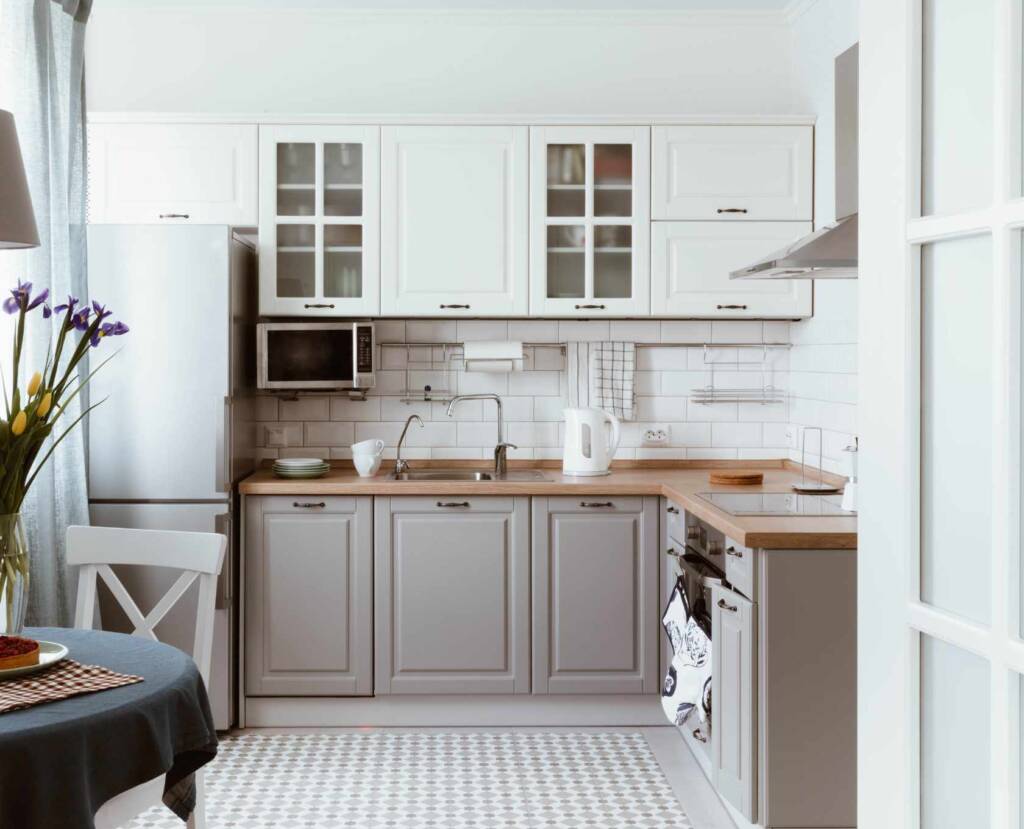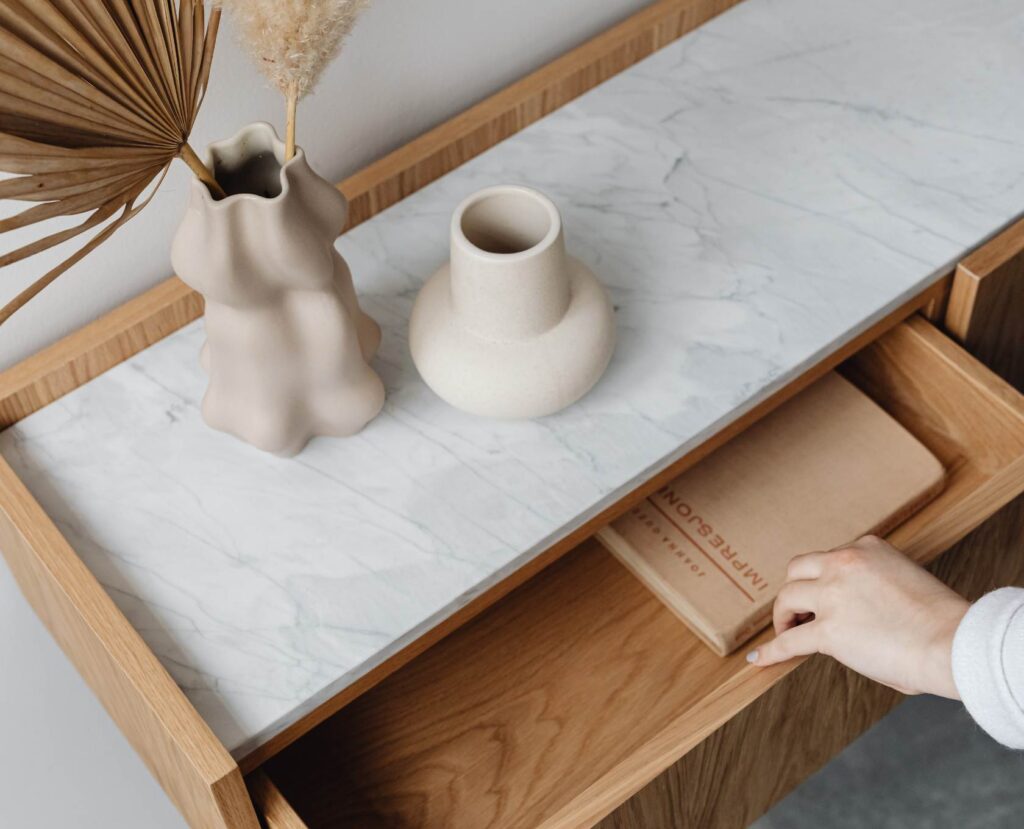Disclaimer: This post may contain affiliate links. This means that if you click on the link and purchase an item, I'll make a small commission to keep the lights running. Furthermore, as an Amazon Associate I earn from qualifying purchases. I recommend only products I have personally tried and believe can bring value to you.
Setting up a kitchen can be daunting and exciting, at the same time. How you organize things in the kitchen will have a huge impact on how you feel when you’re working in it. The first time you set things up, you may be just moving in and be pressed for time. You may not be able to do set everything up perfectly. The good news is that you can course correct later. As long as you have a solid fundamental plan in place. That’s where Kitchen Organization Zones come into play.
Let me share my own story – and how I arrived at a fool-proof method to organize my kitchen to make working a breeze.
A few years back, my husband and I were looking to move into a bigger apartment. If there was one thing we didn’t want to compromise on – it was the kitchen. We both love to cook and we wanted the kitchen to be airy and inviting. We finally did find our dream kitchen (and apartment). I was so excited, my mind was rushing with ideas on how I could best set things up. I’m a little bit of a nerd, so I did what I do best. Research.
My goal was to find best practices, if any, relating to kitchen organization.
During my research I found that the root of kitchen organization actually lies in the layout of the kitchen itself. This was a bit of a bummer for me, I lived in a rental and there was no way I was going to be able to re-do my entire kitchen. Nevertheless, by now I was plain curious – and I pressed forward.
After having gone through a ton of resources – I was able to arrive at a fundamental kitchen organization system that worked for me (without having to redo my kitchen).
I also learnt a thing or two in the process, stuff that I believe could help you if you are looking to better organize your kitchen.
Before I get into all that, it’s important to first understand the origins of kitchen organization, design and efficiency – and find answers to a few fundamental questions.
Is there a Golden Kitchen Workflow Rule?
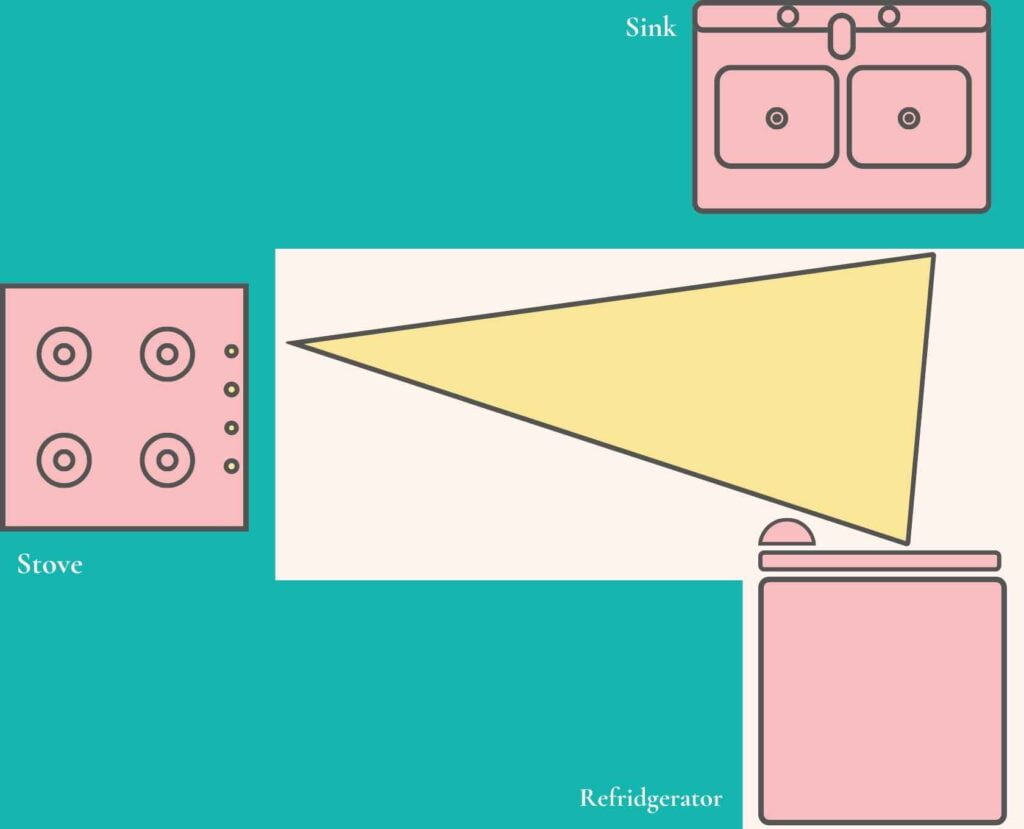
For years, kitchen layouts and workflows were designed around the ‘golden triangle’ concept.
This 1920s idea, first proposed by industrial psychologist and engineer Lillian Moller Gilbreth, was a pretty solid foundation of kitchen workflow management, centered around the three anchor points of the stove top, the sink and the fridge. These anchors loosely formed a work triangle, between which one would work seamlessly and with ease.
Years have passed, and since then a few other kitchen workflow systems have been talked about, including the multiple rectangle concept – introduced in the early 90s by the National Kitchen & Bath Association. This system added microwaves or ovens as the fourth anchor point in the kitchen.
However, nothing gained as much popularity as the Golden Triangle system did.
Is the Golden Triangle Kitchen Rule Still Golden?
The golden triangle concept of kitchen workflow management is still relied upon by many architects and designers while putting together a new kitchen.
It was and still is, a great starting point for making kitchens more efficient.
But it does leave a lot to be desired in today’s times.
For instance, the golden triangle kitchen system was designed around one person doing the cooking, end-to-end.
In today’s kitchens we often divide, delegate and segregate the process of making a meal.
It also doesn’t take into account newly added kitchen appliances and gadgets, like the Air Fryer, Blender, Coffee Machine – and so on.
So, is there a New Method to the Madness?
One of the kitchen organization systems that has gained traction over the past few years is the Kitchen Zone Method.
Like the name suggests, this method is all about dividing things into separate Kitchen Organization Zones.
That way, more than one person can simultaneously and independently work in the kitchen – without getting in each other’s way.
But How Does the Kitchen Zone Method Work?
Identifying kitchen organization zones is actually much simpler than it sounds. Let me try and break this down for you.
Imagine you’re cooking up dinner – from start to finish.
Think of all the steps involved in the process – like washing veggies, marination, chopping, searing etc.
Now – if you were to group these steps into broad categories, they would probably end up being something like this:
- Preparation – Washing veggies, chopping, marinating etc.
- Cooking – Searing, stir-frying, boiling etc.
- Serving – Using utensils and kitchenware to plate what you cooked
- Storing – Leftover that need to go in the fridge
- Clearing up – Cleaning the counter/sink and doing the dishes
These categories are actually different kitchen organization zones, or simply, different work zones in the kitchen.
The Zone Method simply aims to divide up your kitchen into self-sustaining areas, based on your everyday kitchen workflow.
Now we’re all a little different. And an average day in the kitchen might have different steps involved for each of us. I’m not into baking, but maybe you are. Perhaps you’d like to dedicate a zone towards it – so you can find everything within reach when you bake.
There are some who like to look at this method as watertight zones, but I personally prefer to see this system as fluid. The zones in your kitchen can be created basis what fits best into your lifestyle.
If you’re a smoothie gal – maybe you want to create a smoothie station as one zone. Your Airfryer can be your ‘snack zone’. A zone can be as small as a drawer or cabinet or as big as a whole section of cabinets. The idea is to tailor this system to your needs and your space.
Having said that, I’m going to share with you some of the most commonly used zones in everyday modern kitchens. Use this as a starting point to create a basic system and then, feel free to customize according to your needs.
Zone 1: Prep
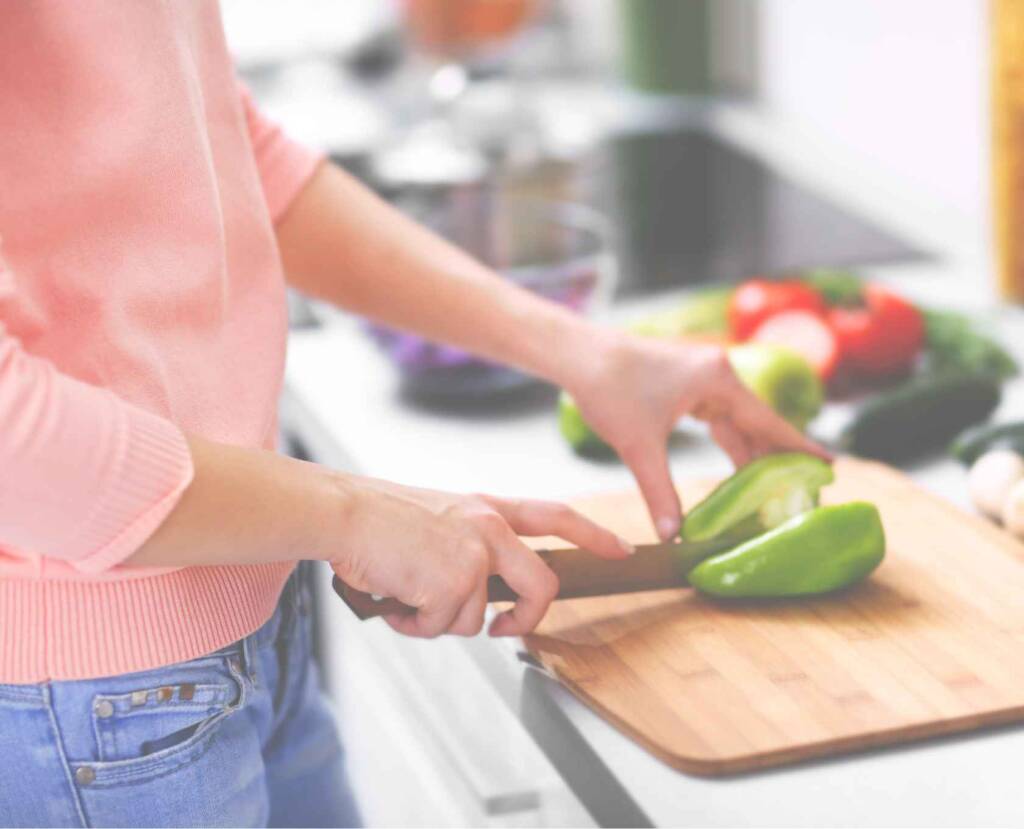
The area where you get all the food ready, before you start cooking.
Here are a few things you can incorporate into this zone:
Appliances
You can dedicate a cabinet or prep-related appliances, such as choppers, blenders, peelers and food processors.
Prepping Tools
Earmark a cabinet or drawer for tools like measuring cups, kitchen scales, chopping boards, knives, colanders, lemon squeezers, garlic presses, mixing bowls etc.
Zone 2: Cooking
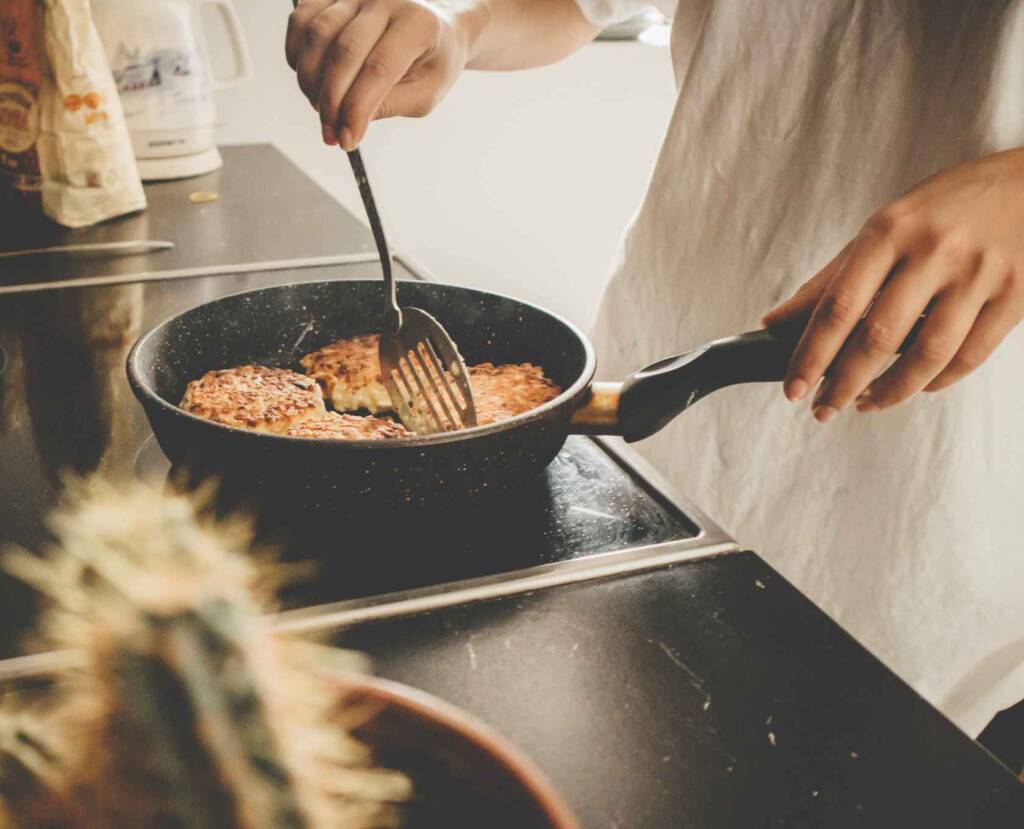
This zone should ideally be centred around your kitchen stove top.
All the magic like searing, tossing, frying grilling etc. happens here!
Here’s all that this zone can contain.
Pots and Pans
A cabinet for most often used cookware.
Ideally situated below the stove. If you’re looking for ideas to organize your cookware and get the most out of your available space, I have a detailed article on the most creative ways to store your pots and pans.
Spices
Again, these are best arranged near the stove. I’ve done mine in a drawer right below.
You can arrange them on a rack on the counter itself – or, if you want to save counter space use a pull out under shelf rack.
Oils
I like to keep my everyday oils right on the counter for super-easy access.
You can arrange these neatly on a cute kitchen counter rack.
Cooking Aids
This includes stuff like wooden spoons, spatulas, tongs silicone flippers etc.
You can either arrange them on a jar on the counter itself – or dedicate a drawer to these near the stove.
The form you have selected does not exist.
Zone 3: Utensils & Serveware
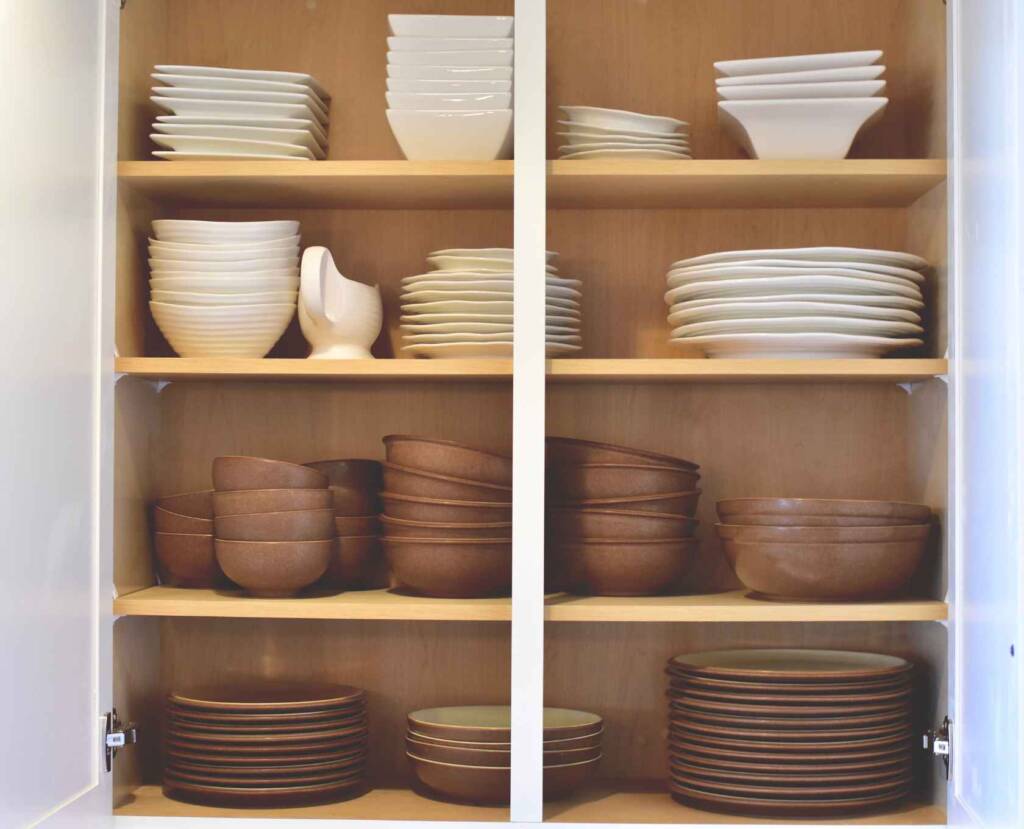
This kitchen organization zone includes everything you need to serve food in.
It’s a good idea to have this situated near the dishwasher (if you have one) to easily load and unload stuff and minimize breakage.
There will be a few sub-categories of items in this zone and I will detail them below.
The idea is to situate all sub-categories in cabinets next to, or around each other to create a larger area or zone.
Crockery
As a general rule, it’s a good idea to segregate your everyday-use dishes from your special-use ones.
Dedicate one cabinet or section of one for frequently used plates, bowls etc.
There are several ways you can organize your plates and crockery – and here too you can take the help of organizers, racks and shelf risers.
Cutlery
A well-organized cutlery drawer can save you a lot of mental headache – so be sure to spend some time thinking about how best to do this for your space.
Drawer dividers and cutlery managers can be a huge help here.
Glassware
Glassware too is best organized by frequency of use.
I like to use upper cabinets for my glassware for ease of access.
It’s also a good idea to use shelf risers to arrange the shorter glasses so you can double up the space available to you.
Zone 4: Storage
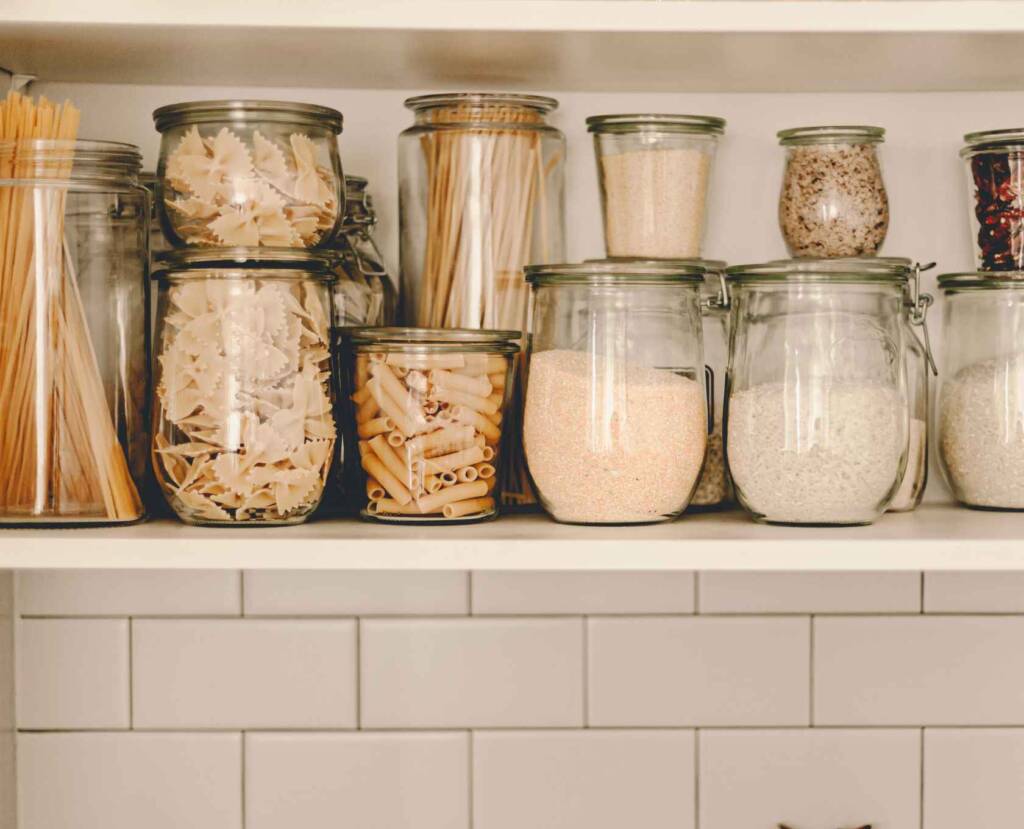
This next kitchen organization zone is best located near your fridge for smooth and easy flow of movement between packing leftovers and storing them.
This area can also include your pantry cabinet – storing all your dry food items, condiments and cereals etc.
Storage Boxes
Use a cabinet to arrange your glass and plastic storage boxes.
I find that this cabinet in particular can quickly overflow with boxes and get messy.
To prevent this, I’ve sectioned my cabinet and segregated the boxes by type – so I keep a tight leash on the number of boxes I have.
I also like to a dedicate a separate basket for lids or use a slotted rack system so you don’t lose them in the abyss.
Pantry Items
This can range from being an entire closet to a cabinet – depending on your available space.
Since this is a fairly broad category, it’s best divided up and arranged in smaller sub-categories – like condiments, canned food, cereals, pulses, snacks etc.
Each item type may require some additional storage tools to make life easier for you.
For example, a lazy susan for sauces and condiments or a deep and slim bin for cans to use extra cabinet depth.
You can check out how I transformed by small kitchen cabinet into a full pantry here.
Zone 4: Cleaning
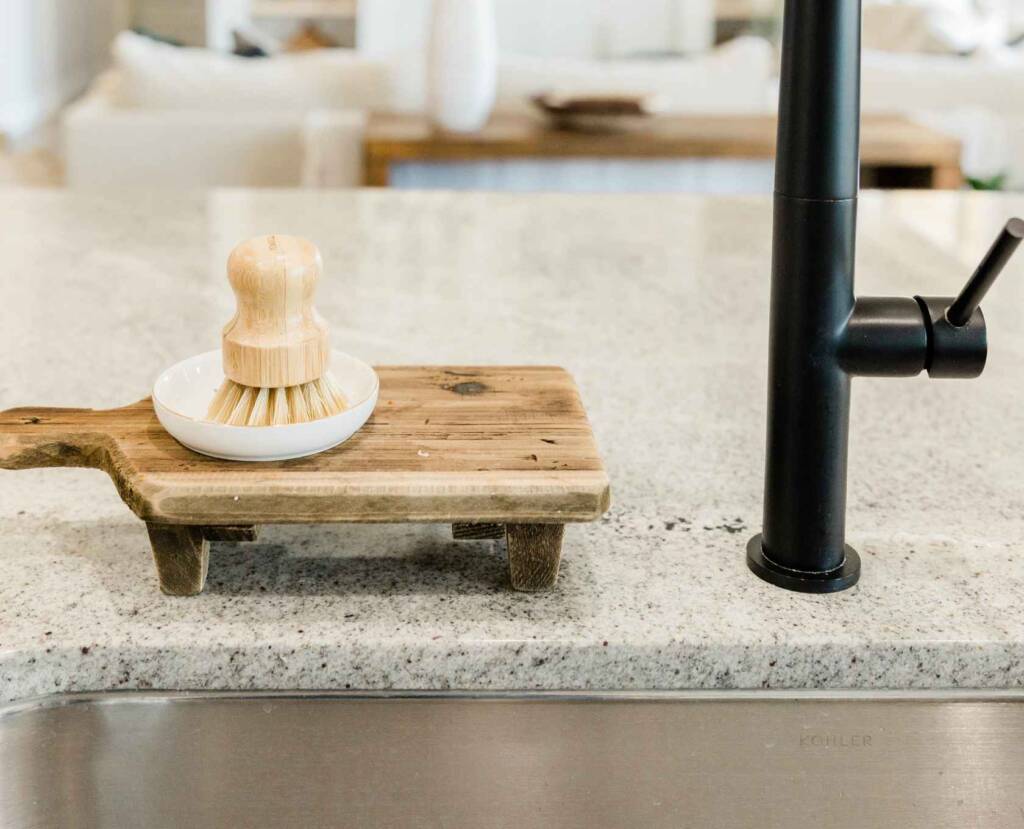
Your cleaning supplies should naturally reside near your sink or dishwasher.
There are a few areas you can use within this zone, to make life more organized.
Under-sink Area
This is a tonne of space that can be optimized to the very tee.
Since there are virtually no divisions in this area, it may be a good idea to invest in an under-sink organiser.
This one from amazon has clear, pull-out drawers for easy access and visibility.
You can use it to store extra sponges, dishwashing liquid, brushes, linen and other cleaning supplies.
Over-the-sink Storage
You can arrange your everyday sponges, soap and brush over or near your sink in a neat caddy or a mat.
This one keeps your sink dry too.
There you have it. Those were the Six Kitchen Organization Zones that will keep your work in the kitchen flowing seamlessly, simplify everyday cooking and generally make being in the kitchen peaceful and joyous! Once you’ve designated and earmarked your kitchen zones, you can follow this step-by-step guide to completely declutter and set up your kitchen.


